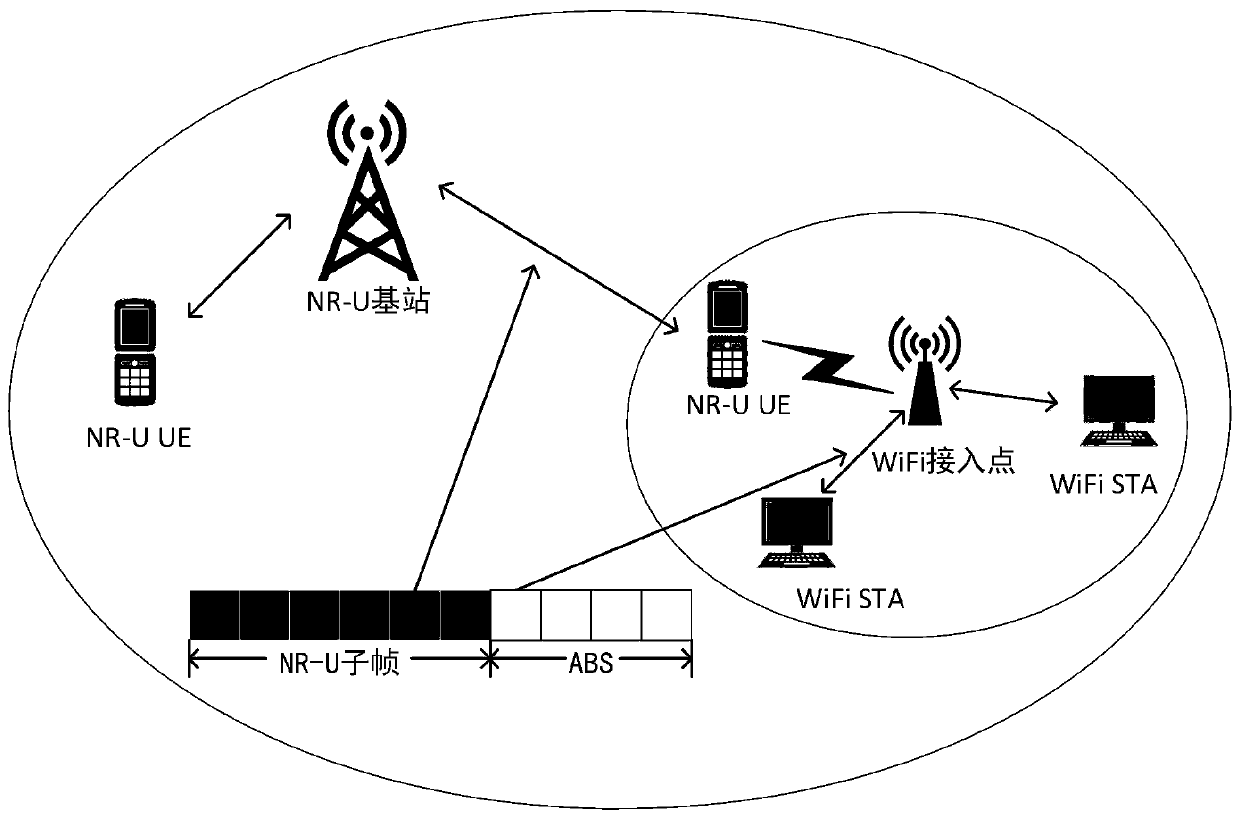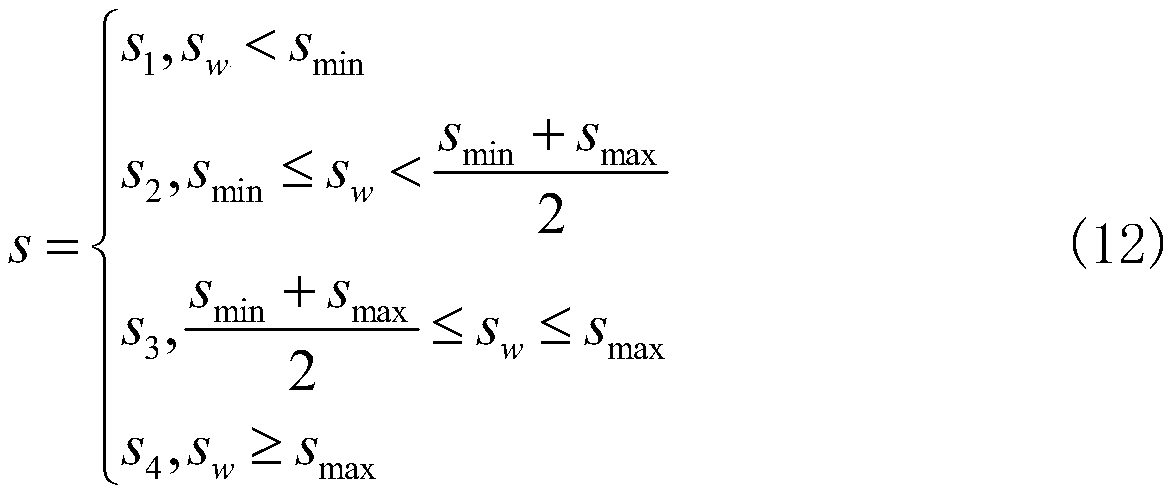5G multi-system coexistence resource allocation method under unlicensed spectrum based on Q learning
A resource allocation, multi-system technology, applied in electrical components, wireless communication, network planning, etc., can solve the problem of inability of NR-U system and WiFi system to coexist, and achieve the effect of improving spectrum resource utilization
- Summary
- Abstract
- Description
- Claims
- Application Information
AI Technical Summary
Problems solved by technology
Method used
Image
Examples
Embodiment 1
[0058] When implementing the 5G multi-system coexistence resource allocation method based on Q-learning under license-free spectrum, based on figure 1 the scene shown. Such as figure 1 Description, there are 2 UEs in the NR-U system, and 2 STAs in the WiFi system. Without loss of generality, in a specific implementation, 10 UEs and 8 STAs share the same license-free spectrum resource.
[0059] However, since the NR-U system adopts a centralized scheduling MAC mechanism, it has better interference tolerance. The WiFi system uses a contention-based MAC mechanism. When the optimization goal is only to maximize the throughput of the coexistence system, the resources of the license-free frequency band will be allocated to the NR-U system as much as possible, resulting in the inability to access WiFi. channel to communicate, the throughput of the WiFi system is greatly reduced. In addition, in the coexistence system model, the NR-U system occupies the entire unlicensed frequency ...
PUM
 Login to View More
Login to View More Abstract
Description
Claims
Application Information
 Login to View More
Login to View More - R&D
- Intellectual Property
- Life Sciences
- Materials
- Tech Scout
- Unparalleled Data Quality
- Higher Quality Content
- 60% Fewer Hallucinations
Browse by: Latest US Patents, China's latest patents, Technical Efficacy Thesaurus, Application Domain, Technology Topic, Popular Technical Reports.
© 2025 PatSnap. All rights reserved.Legal|Privacy policy|Modern Slavery Act Transparency Statement|Sitemap|About US| Contact US: help@patsnap.com



